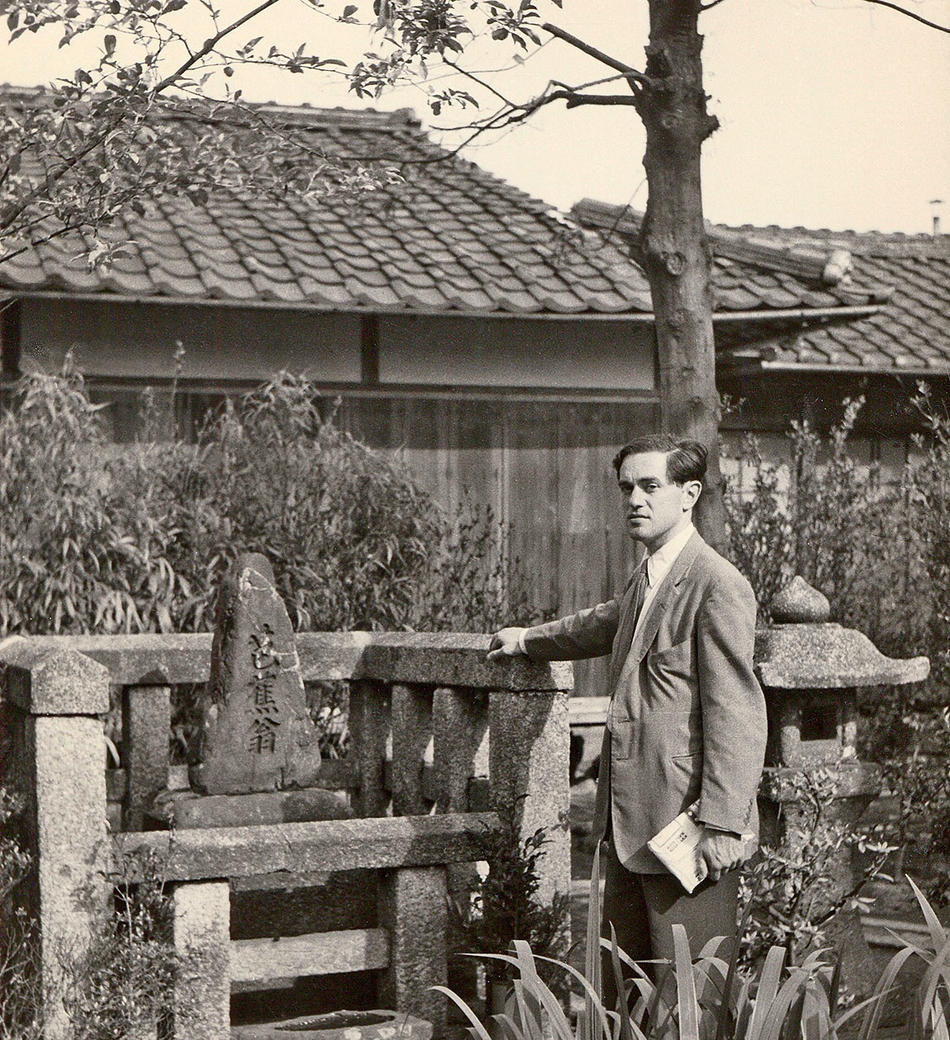When Fred Katayama ’82CC, ’83JRN returned to New York in 1994 after working for five years as a reporter in Japan, he called his old professor Donald Keene ’42CC, ’49GSAS, ’97HON and asked him to dinner for Keene’s birthday. Katayama had taken Keene’s undergraduate course in Japanese literature and had never forgotten it. The two went to birthday dinner and repeated the ritual for the next twenty-five years.
Keene, a University Professor who died in February at ninety-six, was the premier scholar of Japanese culture in the West. He taught at Columbia for fifty-six years and produced dozens of books. Moving fluidly between literature and history, he wrote major works on Noh (classical Japanese theater) and Emperor Meiji and translated many Japanese poets and writers, including his friends Yukio Mishima and Kōbō Abe. His Anthology of Japanese Literature, published in 1955 and still in print, and his monumental four-volume A History of Japanese Literature first brought the subject to Western audiences.
For Katayama, however, Keene’s scholarship had more personal meaning. Growing up in Los Angeles in the sixties, Katayama was ashamed of his Japanese heritage. At Columbia, he took Keene’s class and read his book Landscapes and Portraits: Appreciations of Japanese Culture, which explored Japanese aesthetic principles like impermanence. “He opened my eyes to Japan,” Katayama says.
“Donald knew more about Japan than any Westerner,” says Carol Gluck ’77GSAS, the George Sansom Professor of History at Columbia. “For him, Japanese literature was part of world literature, and you didn’t have to read it in Japanese. He taught us how to love literature — not just to be interested in it, not just to criticize it, but to love it.”
“Professor Keene was small-statured, soft-spoken, and gentle,” says Yoshiko Niiya ’93BC, the assistant director of Columbia’s Donald Keene Center of Japanese Culture, established in 1986. “But when he lectured, there was an aura about him. You could just feel his love and passion.”
Keene grew up in Flatbush, Brooklyn, and entered Columbia at sixteen, where he studied Greek and French literature. “Donald was precocious, but Columbia shaped him intellectually,” says Gluck. “He’s the perfect example of what happens when an impressionable teenager encounters the Core.”
As Keene liked to recount, his first brush with Japan was in 1940, when, as an undergraduate, he passed a bookstore window in Times Square and saw a forty-nine-cent copy of The Tale of Genji, the sprawling eleventh-century work generally considered the world’s first novel. Attracted by the bargain, he bought it; and as Europe sank into barbarism, Keene lost himself in the romantic intrigues of Prince Genji and the exquisite manners of the imperial court of the Heian period. Then, on December 7, 1941, Japan bombed Pearl Harbor. The US was at war.
A pacifist, Keene entered the US Navy Japanese Language School in February 1942. There he befriended Wm. Theodore “Ted” de Bary ’41CC, ’53GSAS, ’94HON. The two were sent to Hawaii as interpreters. Keene interrogated prisoners of war and read the diaries of dead Japanese soldiers, which moved him greatly. After the war, he returned to Columbia for graduate studies under Ryūsaku Tsunoda ’62HON, the mainstay of Japanese studies at Columbia. He began teaching full-time in 1955.
As a teacher, Keene — punctual, attired in jacket and tie, alight with joy in his subject — lectured without notes, imparting his insights directly to students. “We all called him ‘Sensei,’” says Amy Heinrich ’80GSAS, the former director of the C. V. Starr East Asian Library at Columbia. “‘Sensei’ means teacher, but it is also a term of respect. He was, for his whole life, our Sensei.”
Keene taught his last class at Columbia in the spring of 2011. The following year he became a Japanese citizen, living full-time in Tokyo. “Japanese, which at first had no connection with my ancestors, my literary tastes, or my awareness of myself as a person, has become the central element of my life,” Keene wrote in his memoir Chronicles of My Life: An American in the Heart of Japan.
Last August, Katayama visited his “beloved Sensei” at his home. They went to a nearby restaurant. The restaurant was closed, but the owner opened it for Keene and made his favorite meal. “Donald talked about the emperor and empress — he knew them and loved them both. Then he said that he was finishing up his book on the late Ted de Bary, his best friend, and that he wasn’t doing any more research. That saddened me.”
In those last months, Keene received a stream of friends. “He was frail,” says Gluck, “but anybody who came to Japan went to visit him. At the end, it was his students he most wanted to see.”
Keene died of heart failure on February 24. His death made headlines around the world. The emperor and empress sent a wreath to the funeral home. In April, a public memorial in Tokyo drew 1,500 people, including Heinrich. And in New York, Fred Katayama made a donation to the Donald Keene Center, in honor of the Sensei who had helped him discover the beauty of impermanence.
This article appears in the Summer 2019 print edition of Columbia Magazine with the title "Found in Translation."



